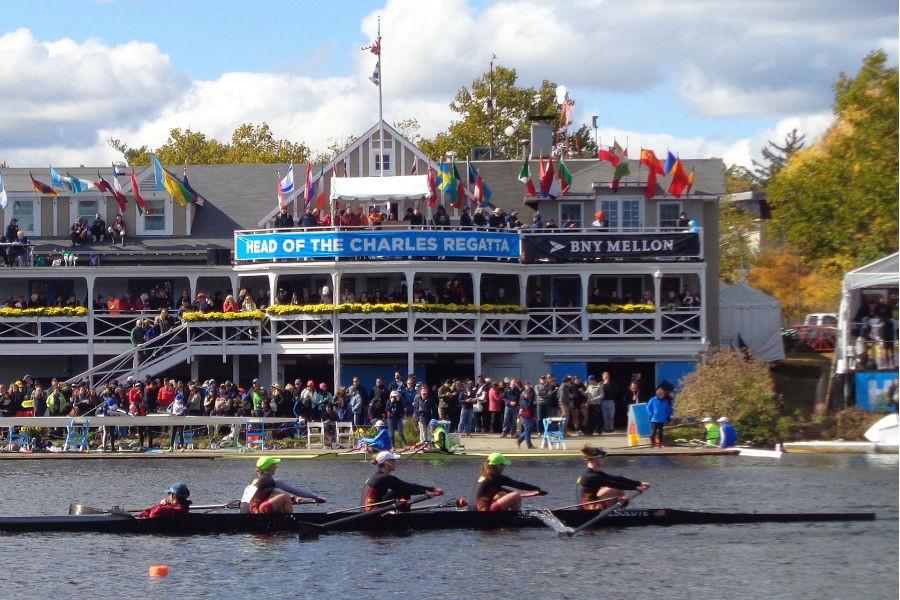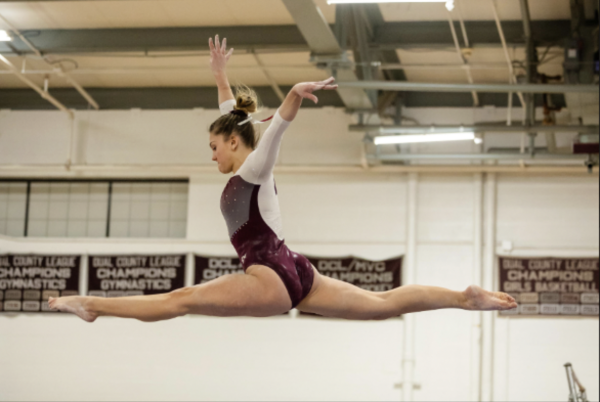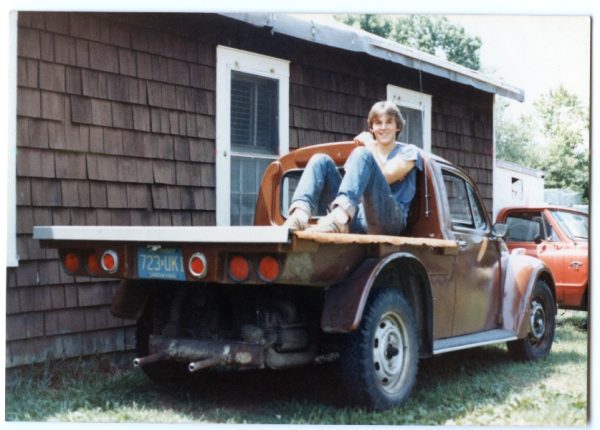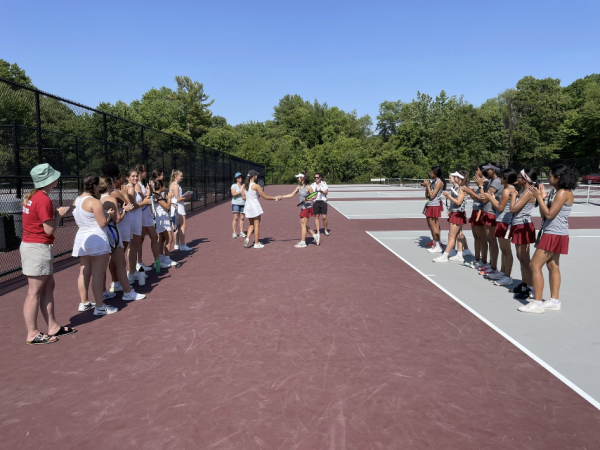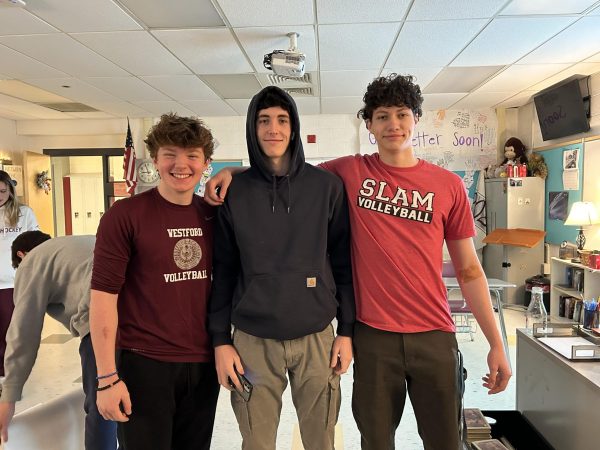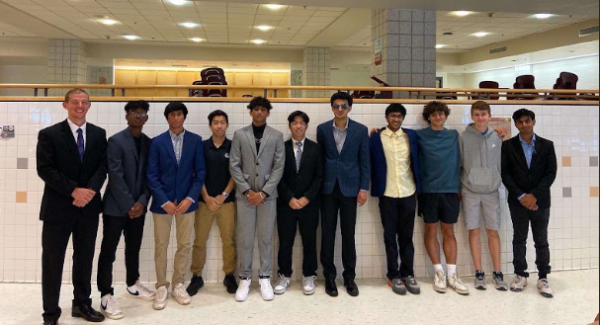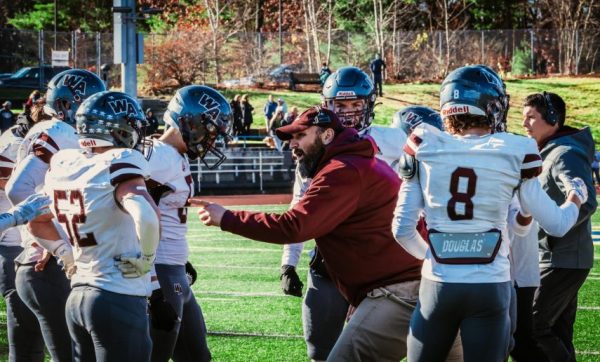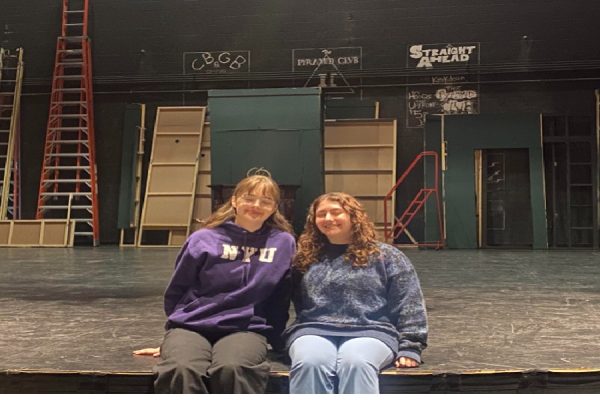Girls’ Crew begins winter training
From left to right: Taiga Kambara, Shannon Forty, Kassie Wilson, Alex Shea, and Lilly Keele at the Head of the Charles Regatta 2015
January 6, 2016
Coming off the fall season, the Girls’ Westford-Littleton Community Crew team is ready to take on bigger challenges as they begin their annual winter training. Although this season, the team struggled to perform as well as they did in previous years, the WLCC team hopes to make up for it with winter training, which has started strong.
Crew is one of the few year-round sports at WA. It begins with practice throughout the summer, followed by a fall season which is more focused on long distance rowing. Starting in mid-November, the rowers begin to work on strength training and improving times via an ergometer, a machine that simulates rowing. The team’s work during the winter culminates in the competitive spring season that is focused on short-distance.
“Winter training is a crucial part of our sport because fitness is often the main determinant of performance. This being an aerobic sport, it takes a lot to get fast, and there’s just no time to make up for missed training opportunities in the winter,” said Head Coach Dave Cormier.
Winter training is optional, and members choose to train between three and six times a week, although most tend to work for about 12-15 hours. By lifting weights, pulling, and training their upper bodies, the crew team hopes to improve their times for the spring races.
“The end-goal of winter training is to decrease our team’s average 2,000 meter (our standard race distance) time by a significant amount, through increased aerobic fitness. All the training we do, starting with the first practice in the fall, is aimed at making us faster over 2,000m,” said Cormier.
Far more people have signed up for winter training than in past years, and the team is working out more regularly and for longer periods of time. The WLCC Girls’ captains attribute this to the recent staffing changes and their actions to help the team.
“I think [the increased sign-ups are] because our coach handles it well. I think people enjoy it. It’s exhausting, it’s hard work, but the work you put is what you get out,” said senior captain Lilly Keele.
Keele and her co-captain, senior Shannon Forty, who have both been on the team for four years, have noticed a definite change in the team recently due to the new staffing, brought on this year by the new head coach Dave Cormier. The new staff, comprised of four coaches as opposed to the one they had before, has been working with the team to map out progress and set goals for the end of the winter. Both the rowing and the lifting coaches are structured and organized, which the team finds helpful as they work to improve for spring.
“The improvements that our coaches have made […] they bought us three new boats in the past season […] they’ve made us want to work harder, which is definitely good. You see that throughout the team,” said Keele.
Additionally, the mentality of the players has changed recently as new members enter with a positive attitude. Although the team remains as competitive than it always has been, the captains and coach feel that this year the team is eager to row and work well together.
“I am constantly impressed by our athletes’ enthusiasm and maturity, and my impressions have not changed much […] we’re only just getting started!” said Cormier.
As seniors, the captains aim to leave the team with a lasting sense of this positivity and to continue to encourage the team to work hard and improve.
“I’m just looking to work hard, and just leave the team with a positive attitude. I want the next couple years of people to want to do as well as we have,” said Forty.
With all these goals in mind, WLCC is continuing to push through the winter training with the prospect of rowing again in the spring on the horizon. Generally, competitive races are the main focus of spring crew, more so than in summer or fall.
“I would like to see this team become a strong regional competitor across the board as well as an annual contender at the USRowing National Championships,” said Cormier. “We are also seeking to create an environment that will set our athletes up for success throughout their college and working careers.”
Despite having a focused and goal-oriented outlook, much of the team’s motivation comes from simply the prospect of rowing competitively again, as well as being on the water after months on the ergometers.
“When you get with a boat and you work together, you find something called swing, and then you find this heartbeat, and it’s just the most beautiful thing in the world. That’s what rowing is,” said Forty.

